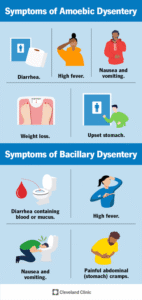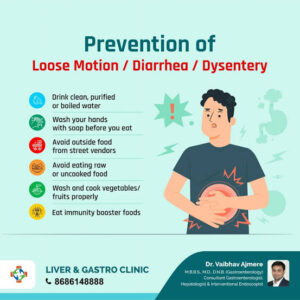Back to: MICROBIOLOGY 300 LEVEL
Welcome to class!
I’m really glad you’re here today. We’re discussing three very common but serious conditions that affect the digestive system—Diarrhoea, Dysentery, and Cholera. These are not just medical terms; they are real problems that impact millions of people across Nigeria and Africa, especially during the rainy season or in areas where access to clean water is limited. By the end of this lesson, you’ll be able to explain the differences, causes, and how to prevent them—skills that are especially useful if you’re ever working in clinics, hospitals, or public health fields.
Diarrhea, dysentery, cholera
Diarrhoea
Diarrhoea is the passage of loose or watery stools three or more times in a day. It may not always be dangerous, but when it lasts too long, it can lead to dehydration and even death—especially in children.

Causes:
Viruses (like rotavirus), bacteria (like E. coli or Salmonella), or parasites from contaminated food, water, or poor hygiene.
Symptoms:
Watery stools, abdominal cramps, bloating, nausea, and sometimes vomiting.
Prevention:
Clean drinking water, handwashing, proper food handling, and exclusive breastfeeding for babies under six months.
Treatment:
The most important treatment is oral rehydration solution (ORS) to replace lost fluids. Zinc supplements and continued feeding are also recommended.
Picture a child in a rural community in Osun State who suddenly starts passing loose stool after eating mangoes washed with stream water. With timely ORS, the child recovers fully.
Dysentery
Dysentery is a type of diarrhoea that contains blood and/or mucus, often accompanied by fever and more severe abdominal pain. It shows that the intestine is inflamed and damaged.
Causes:
Mostly caused by Shigella bacteria or Entamoeba histolytica (a parasite).
Symptoms:
Bloody diarrhoea, fever, painful cramps, urgency to pass stool, and general weakness.
Mode of transmission:
Faeco-oral route—through contaminated food, water, or hands.
Treatment:
Antibiotics may be required for bacterial dysentery, while antiparasitic medications are used for amoebic cases. Rehydration is also essential.

Imagine a boarding school with poor toilet hygiene, where several students suddenly begin passing blood-stained stools. A quick diagnosis confirms bacterial dysentery, and prompt treatment helps control the spread.
Cholera
Cholera is a severe and often life-threatening diarrhoeal illness caused by Vibrio cholerae.
Symptoms:
Sudden onset of profuse watery stool (often described as “rice water”), vomiting, extreme thirst, muscle cramps, and rapid dehydration.
Transmission:
Drinking water or eating food contaminated with the bacteria, especially in areas with poor sanitation.
Why it’s dangerous:
Without quick treatment, a person can die within hours due to fluid loss.
Treatment:
Immediate rehydration with ORS or intravenous fluids and antibiotics in severe cases.
Prevention:
Safe water, good sanitation, cholera vaccines, and health education during outbreaks.
Imagine a flood in a riverine community in Delta State. Within days, many people fall sick with watery diarrhoea and dehydration. Health workers quickly set up rehydration centres and distribute clean water to contain a cholera outbreak.
Summary
- Diarrhoea is frequent watery stool, often from viruses or bacteria, and is managed with rehydration.
- Dysentery involves blood or mucus in stool and usually results from bacterial or parasitic infections.
- Cholera causes severe watery diarrhoea and rapid dehydration, especially in unsanitary conditions.
Evaluation
- What is the main difference between diarrhoea and dysentery?
- Why is cholera considered a medical emergency?
- What are two key ways to prevent diarrhoeal diseases?
Every lesson you master brings you closer to becoming a capable health expert who can solve real challenges in our communities. Keep your energy up, stay consistent, and remember—Afrilearn is proud to support you every step of the way. See you in the next class!
